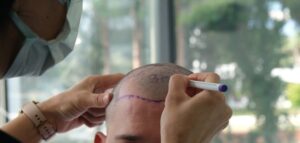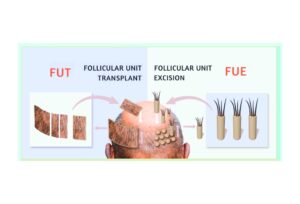The advancements in hair transplant surgery over the past couple of decades have been pretty astonishing. At one time, hair transplants were incredibly primitive and did not provide natural looking results at all. Thankfully, hair transplant methods have come on a long way and it’s now possible to get extremely natural looking results at an affordable price.
As hair transplant methods have increased in sophistication, it makes sense that technology would start to play a greater role. The newest addition of technology to hair transplant methods is the ARTAS device. ARTAS is advertised as a way to speed up the process of Follicular Unit Extraction (FUE).
As with any advertising related to hair loss – ARTAS advertising should be taken with a pinch of salt and must be looked at more closely to discern what the pros and cons of using the device actually are.
Pros of Using ARTAS
- Marketing – Robotic hair transplants sound pretty cool! By offering this service a less experienced doctor can set up shop doing hair transplants among the other services they already provide.
- Less Experienced Needed – A less experienced doctor can rely on the ARTAS machine to handle the delicate job of extracting grafts.
Cons of Using ARTAS
-
- Restricted Usage – One of the biggest downsides to ARTAS that isn’t always discussed, is that its very restricted when it comes to the type of patient it’s suitable for. ARTAS can only be used on patients with straight, dark hair.
- Restricted Donor Areas – Many patients require an extended donor area when the back of the head doesn’t have enough hair. In this case, ARTAS is not of any use since it’s only able to extract hair from the back and sides of the head.
- Possible Healing Complications – ARTAS uses large diameter punches to extract follicles, which can result in healing complications and also damage nearby follicles.
- Speed – A trained expert is still much quicker than the ARTAS robot.
- Graft Survival – an experienced surgeon can expect a survival rate of 97-95%. The ARTAS robot has a much lower survivability percentage of around 90%
Conclusion
Whilst it might seem overblown to refer to hair transplant surgery as an art, this is actually not far from the truth. Any type of cosmetic surgery requires a mix of technical skill and imagination. You cannot remove the artistic part of the process if you want natural looking results.
Dr Jones has gained a reputation for providing FUE hair transplants that offer an incredibly natural look and that have a very high graft survival rate. Whilst machines such as ARTAS do have some value, they cannot replace the expert skill and knowledge of an experienced surgeon.

















